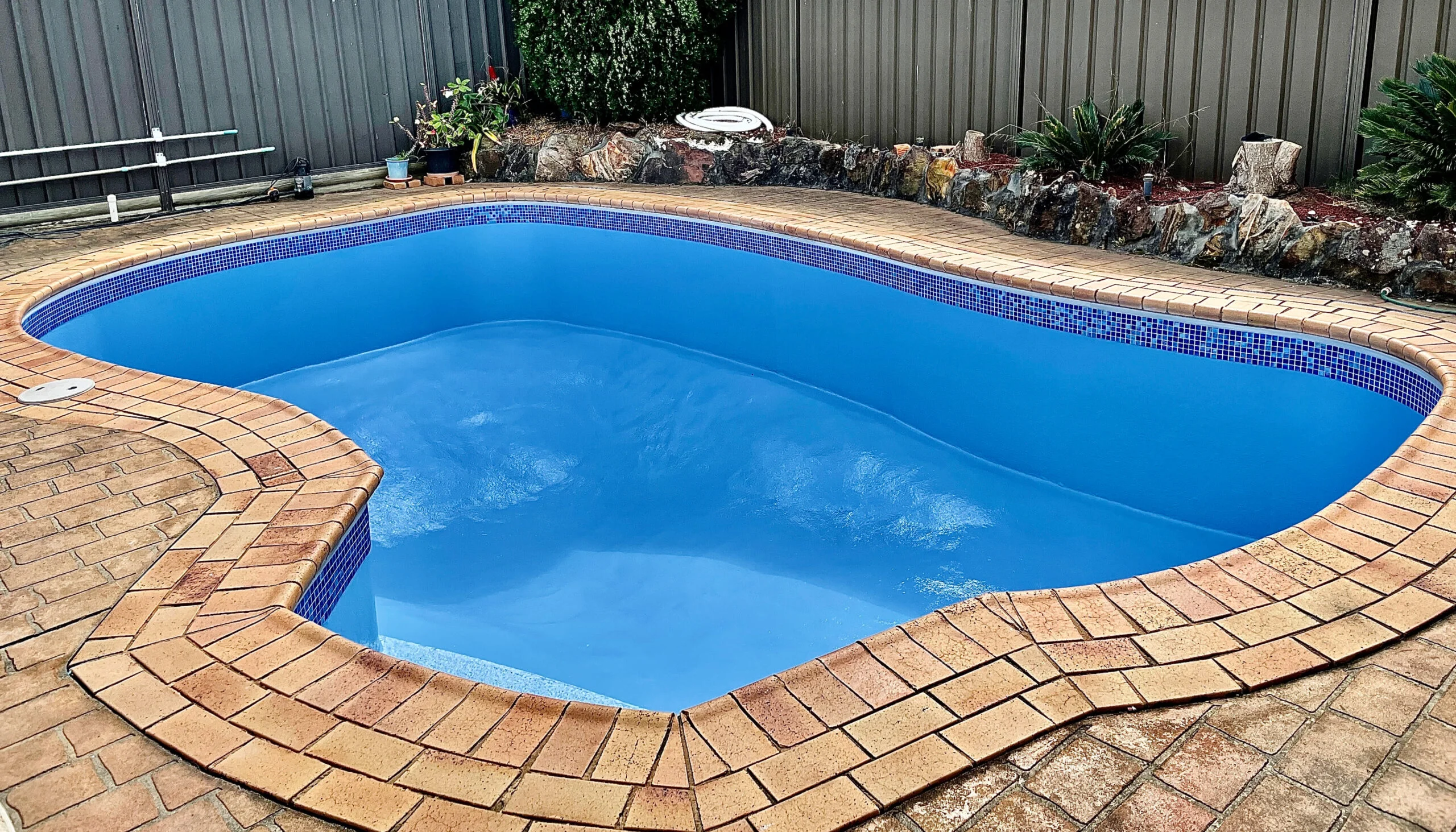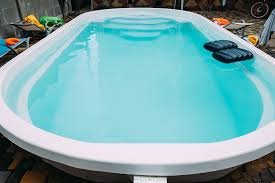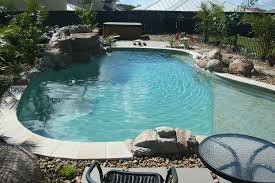Table of Contents
Vinyl liner vs fiberglass vs concrete pool cost
When choosing a swimming pool, home owners often consider three basic types: vinyl liner pools, fiberglass pools, and concrete pools. Each of these pool types has distinct advantages and disadvantages that cater to different preferences, budgets and site-specific conditions. Below is a comprehensive comparison of vinyl liner pools, fiberglass pools, and concrete pools, covering various aspects such as construction, cost, maintenance, durability, customization, and aesthetics. source
1. Construction Process
Vinyl Liner Pools

- Construction:Vinyl liner pools are constructed using a frame made of steel, aluminum or polymer. The frame creates the shape and structure of the pool, and the interior is lined with a flexible vinyl sheet that acts as the pool’s waterproof barrier.
- Installation:** The installation process typically involves excavating the site, assembling the pool frame, preparing the base (usually with sand or vermiculite), and installing the vinyl liner. The liner is custom fitted to the dimensions of the pool and secured to the top edge. The pool is then filled with water, and any wrinkles in the liner are smoothed out.
- Time:Vinyl liner pools typically take 1 to 3 weeks to install depending on the complexity of the design and site conditions.
Fiberglass Pool

- Construction: Fiberglass pools are prefabricated shells made from a combination of fiberglass and resin. The entire pool is built offsite in a factory and then transported to the installation site.
- Installation:Installation involves excavating the site, preparing the foundation (usually with gravel or sand) and placing the prefabricated fiberglass shell in the excavation. The pool is then leveled, connected to the plumbing and electrical systems, and backfilled around the shell. The process is relatively quick and straightforward.
- Time: Fiberglass pools have the fastest installation time, typically 1 to 2 weeks, as the pool shell is delivered ready-made and requires minimal on-site construction. .
Concrete Pools

- Structure:Concrete pools are constructed entirely on site using a steel rebar framework, which is then covered with a mixture of concrete and water. Concrete can be placed using the gunite or shotcrete method.
- Installation:This process includes excavation, setting up the steel framework, placing concrete, curing, and finishing with surface materials such as plaster, tile or gravel. Custom features such as steps, benches, and curbs are also constructed during this process.
- Time:Concrete pools have the longest construction time, depending on design complexity and site-specific factors, 8 to 12 weeks or more.
2. Vinyl liner vs fiberglass vs concrete pool cost
Vinyl Liner Pools
- Initial Cost:Vinyl liner pools are usually the most affordable option. Average cost ranges from $25,000 to $45,000 depending on size, shape and additional features.
- Long-Term Costs:Over time, vinyl liners need to be replaced every 7 to 12 years, with replacement costs ranging from $4,000 to $7,000. Additionally, maintenance costs for vinyl liner pools include regular chemical balancing and cleaning.
Fiberglass Pool Cost
- Initial Cost: Fiberglass pools are more expensive than vinyl liner pools but less expensive than concrete pools. Average cost ranges from $35,000 to $60,000 depending on size and options.
- Long Term Costs: Long term costs are lower due to the minimal maintenance requirements of fiberglass pools. A smooth, non-porous surface reduces the need for chemical treatment and cleaning. Although the initial investment is high, the savings in maintenance and durability can offset it over time.
Concrete Pools Cost
- Initial Cost: Concrete pools are the most expensive option, typically costing from $50,000 to $100,000 or more, depending on design, size and features.
- Long-Term Costs:Concrete pools require regular maintenance, including chemical balancing, cleaning, and resurfacing every 10 to 15 years. Resurfacing costs can range from $10,000 to $20,000, depending on the finish chosen. Greater maintenance needs contribute to higher long-term costs.
3. DURABILITY AND MAINTENANCE
Vinyl Liner Pools
- Durability: Vinyl liners are susceptible to punctures, tears, and fading over time. Sharp objects, pets, and improper maintenance can damage the liner, requiring repair or replacement.
- Maintenance:Vinyl liner pools require careful chemical balancing to prevent liner degradation. Regular cleaning is necessary to prevent algae growth, and the liner may need to be replaced every 7 to 12 years.
Fiberglass Pool
- Durability: Fiberglass pools are extremely durable, lasting 25 to 30 years or more when properly maintained.ained non-porous surface resists algae growth and chemical damage, reducing the need for frequent cleaning and chemical treatment.
- Maintenance: Maintenance requirements are minimal compared to vinyl and concrete pools. A smooth surface makes cleaning easier, and the pool is less prone to staining and algae growth. Fiberglass pools do not require resurfacing, which contributes to their low maintenance costs.
Concrete Pools
- Durability:Concrete pools are incredibly durable and can last 50 years or more. The combination of steel reinforcement and concrete provides strength and durability, making them suitable for a variety of climates and soil conditions.
- Maintenance:Concrete pools require more maintenance than vinyl and fiberglass pools. The porous nature of concrete makes it prone to algae growth, which requires regular brushing and chemical treatment. Concrete pools require resurfacing every 10 to 15 years to maintain their appearance and functionality.
4. Features and Aesthetics
Vinyl Liner Pools
- Customization:Vinyl liner pools offer some customization options, including a variety of liner patterns and colors. However, shapes and sizes are somewhat limited compared to concrete pools, as they rely on prefabricated steel or polymer frames.
- Aesthetics:Vinyl liner provides a smooth, uniform surface with a wide range of design options. However, liner seams can sometimes be visible, and the overall appearance may not be as luxurious as concrete or fiberglass pools.
Fiberglass Pool
- Customization: Fiberglass pools come in pre-molded shapes, limiting customization to standard design choices. Although some manufacturers offer different sizes and shapes, the options are not as extensive as with concrete pools.
- Aesthetics:The gelcoat finish of fiberglass pools provides a smooth, glossy surface that is visually appealing. Seamless construction and the ability to add features like built-in steps or benches enhance the pool’s aesthetics. However, limited design options may not satisfy home owners seeking a completely unique pool.
Concrete Pools
- Customization:Concrete pools offer the highest level of customization. They can be made in any shape, size or depth, allowing for unique designs that suit the homeowner’s vision and site conditions. Custom features such as infinity edges, waterfalls, grottos, and integrated spas can be easily added.
- Aesthetics:Concrete pools are highly customizable in terms of finish. Options include plaster, tile, stone, and quartz, each offering different textures, colors, and visual effects. The pool’s ability to blend in with the surrounding landscape and architecture makes concrete pools a great choice for those looking for a luxurious, one-of-a-kind design.
5. Environmental Effects
Vinyl Liner Pools
- Environmental Impact:Vinyl liner pools have a moderate environmental impact. Vinyl liner is made from PVC, which is not biodegradable and can contribute to environmental pollution if not disposed of properly. However, steel or polymer walls are reusable.
- Energy Efficiency:Vinyl liner pools typically require a pool heater to maintain a comfortable water temperature, which can increase energy consumption.
Fiberglass Pool
- Environmental Impact:Fiberglass poles have a relatively low environmental impact. Fiberglass shells require less energy to manufacture than concrete, and the smooth surface reduces the need for chemical treatments. Fiberglass pools are also energy efficient, as they retain heat better than vinyl or concrete pools.
- Energy Efficiency:The non-porous surface of fiberglass pools helps maintain water temperature, reducing the need for frequent heating and reducing energy costs.
Concrete Pools
- Environmental Impact: Concrete ponds have high environmental impact due to the energy-intensive production of concrete and the use of large amounts of water during construction. Additionally, concrete pools often require more chemicals to maintain, which can contribute to environmental pollution.
- Energy Efficiency:Concrete pools are less energy efficient than fiberglass pools, as porous surfaces can lead to heat loss, requiring more frequent reheating. .
6. Resale Value
Vinyl Liner Pools
- Resale Value:Vinyl liner pools may not add as much resale value to a property as fiberglass or concrete pools, primarily due to perceived less durability and the need to replace the liner. . However, a well-maintained vinyl liner pool can still be a selling point to potential buyers.
Fiberglass Pool
- Resale Value:Fiberglass pools are generally a property favorite for their durability, low maintenance requirements and attractiveness. Adds good resale value due to aesthetics. Longevity and minimal maintenance are attractive. Food items for home buyers.
Concrete Pools
- Resale Value:Concrete pools typically add the highest resale value due to their longevity, customization and luxurious appearance. A well-designed concrete pool can significantly enhance the overall appeal of a property, making it more attractive to potential buyers.
7. Comparison cost of Vinyl liner vs fiberglass vs concrete pool cost
Here’s a comparison table that summarizes the key differences between vinyl liner pools, fiberglass pools, and concrete pools:
| Aspect | Vinyl Liner Pool | Fiberglass Pool | Concrete Pool |
| Construction | Steel/aluminum/polymer frame with vinyl liner | Pre-manufactured fiberglass shell | On-site construction with steel rebar and concrete |
| Installation Time | 1 to 3 weeks | 1 to 2 weeks | 8 to 12 weeks or more |
| Initial Cost | $25,000 to $45,000 | $35,000 to $60,000 | $50,000 to $100,000+ |
| Long-Term Costs | Liner replacement every 7-12 years ($4,000 to $7,000) | Low maintenance costs, minimal repairs | Regular maintenance and resurfacing every 10-15 years ($10,000 to $20,000) |
| Durability | Moderate (prone to punctures, requires liner replacement) | High (25-30 years or more) | Very High (50 years or more) |
| Maintenance | Regular cleaning, chemical balancing, liner replacement | Minimal cleaning, low chemical needs | Regular cleaning, chemical balancing, resurfacing |
| Customization | Limited to liner patterns and pre-defined shapes | Limited to pre-molded shapes, but some features can be added | Unlimited customization in shape, size, and features |
| Aesthetics | Smooth surface with visible seams, various liner patterns | Glossy, seamless finish, appealing but limited design options | High-end finishes (plaster, tile, pebble, quartz), luxurious appearance |
| Environmental Impact | Moderate (vinyl is non-biodegradable, energy use for heating) | Low (energy-efficient, minimal chemical use) | High (energy-intensive construction, higher chemical use) |
| Energy Efficiency | Requires frequent heating, less energy-efficient | Retains heat well, energy-efficient | Requires more heating, less energy-efficient |
| Resale Value | Moderate (lower perceived durability) | Good (durability and low maintenance appeal) | High (luxury and customizability add value) |
| Common Issues | Liner tears, fading, potential punctures | Limited shape options, potential for color fading over time | Algae growth, cracks, higher maintenance needs |
| Best For | Budget-conscious homeowners wanting customization with moderate investment | Homeowners seeking low-maintenance, durable pools with faster installation | Those seeking a highly customizable, long-lasting, luxury pool |
This table provides a clear overview of the key factors that differentiate vinyl liner pools, fiberglass pools, and concrete pools, helping you to make an informed decision based on your specific needs and preferences.
Conclusion
Choosing between a vinyl liner pool, fiberglass pool, and concrete pool depends on a variety of factors, including budget, desired customization, maintenance preferences, and long-term goals. Here is a summary:
- Vinyl Liner Pools:Perfect for those looking for an affordable, customizable option with moderate durability. They are ideal for homeowners who prefer lower upfront costs but are willing to manage liner replacement over time.
- Fiberglass Pools:offer a balance of durability, low maintenance and quick installation, making them an excellent choice for homeowners looking for a long-lasting pool with minimal maintenance.
- Concrete Pools:The perfect option for those looking for a highly customizable, luxury pool that can be built to any shape, size and design. Although they require more investment and maintenance, their durability and resale value often justify the cost.
This detailed article, including a comparison table, provides a comprehensive guide to help you understand the differences between vinyl liner pools, fiberglass pools, and concrete pools, to help you make the best choice for your needs and preferences. Read more


When considering the installation of a swimming pool, one of the most significant factors to evaluate is the cost. The type of pool you choose can greatly influence the overall price, including installation, maintenance, and long-term durability. In this guide, we’ll break down the costs of three popular pool types: vinyl liner, fiberglass, and concrete pools.
1. Vinyl Liner Pools
Vinyl liner pools are the most affordable option when it comes to initial installation costs. They are made from a custom-fit vinyl liner stretched over a steel or polymer frame. This makes them quick to install and less expensive than concrete pools.
Initial Installation Cost:
The cost of installing a vinyl liner pool typically ranges from $20,000 to $45,000 depending on the size, shape, and customization options. Basic models are less expensive, but more elaborate designs or larger pools can increase the price.
Maintenance Cost:
Vinyl liner pools generally have lower maintenance costs compared to concrete pools. The vinyl liner itself needs to be replaced every 7-15 years, with replacement costs ranging from $3,000 to $5,000. Regular maintenance includes cleaning the liner and checking the pool’s water chemistry.
Longevity:
Vinyl liners are durable, but they can be susceptible to tears, fading, and damage from sharp objects. The liners typically last around 10-15 years before needing replacement.
Pros:
Affordable installation
Smooth surface, which is easier on the skin
Less expensive to maintain than concrete
Cons:
Vinyl liner needs to be replaced periodically
Not as customizable as concrete pools
2. Fiberglass Pools
Fiberglass pools are pre-molded pools made from durable fiberglass material. These pools are a popular choice for homeowners who want a low-maintenance pool with a quick installation process.
Initial Installation Cost:
The cost of a fiberglass pool generally ranges from $25,000 to $60,000. This depends on the pool’s size, shape, and customization options. Fiberglass pools are more expensive than vinyl liner pools but can be a more affordable alternative to concrete pools.
Maintenance Cost:
Fiberglass pools have the lowest maintenance costs among all pool types. The surface is smooth, which reduces algae buildup and makes cleaning easier. The cost of maintaining a fiberglass pool is typically $500 to $1,500 per year, depending on the pool’s size and location.
Longevity:
A fiberglass pool is incredibly durable and can last 25-30 years or more with proper care. The fiberglass shell is resistant to cracking and fading, offering long-term value.
Pros:
Fast installation (usually in 3-4 weeks)
Minimal maintenance required
Long lifespan
Energy-efficient
Cons:
Higher upfront cost than vinyl liner pools
Limited shape and design options due to pre-molded designs
3. Concrete Pools
Concrete pools (also known as gunite or shotcrete pools) are the most customizable option and are often chosen for their ability to be built in any shape, size, or depth. However, they come with higher upfront costs and more maintenance requirements.
Initial Installation Cost:
Concrete pools are the most expensive option, with installation costs typically ranging from $50,000 to $100,000 or more. This price depends on the pool’s design, features, and size. Custom designs or additional features like waterfalls, spas, and lighting can drive the price higher.
Maintenance Cost:
Concrete pools are more expensive to maintain than both vinyl liner and fiberglass pools. They require resurfacing every 10-15 years, which can cost between $5,000 and $10,000. The porous surface of concrete also allows algae to grow, meaning they require more frequent cleaning and chemical maintenance. Annual maintenance can cost anywhere from $1,500 to $2,500.
Longevity:
Concrete pools are built to last for decades, often exceeding 50 years with proper maintenance. The structural integrity is incredibly durable, but the surface may need occasional repairs or resurfacing.
Pros:
Fully customizable in terms of shape, size, and features
Long-lasting and durable
Can add significant value to a home
Cons:
High upfront cost
Higher long-term maintenance and repair costs
Longer installation time (usually several months)
Comparison Summary
Pool Type Initial Cost Maintenance Cost Longevity Customization Pros Cons
Vinyl Liner $20,000 – $45,000 $500 – $1,500/year 10-15 years Limited Affordable, quick installation, low maintenance Requires liner replacement, limited design options
Fiberglass $25,000 – $60,000 $500 – $1,500/year 25-30 years Moderate Low maintenance, durable, energy-efficient Higher upfront cost, limited design options
Concrete $50,000 – $100,000 $1,500 – $2,500/year 50+ years High (fully customizable) Customizable, long-lasting, adds value to property High upfront cost, higher maintenance and repair costs
Conclusion
Choosing the right pool for your home ultimately depends on your budget, maintenance preferences, and desired design features.
Vinyl liner pools are ideal if you’re looking for an affordable option and don’t mind replacing the liner periodically.
Fiberglass pools are a great balance of cost, low maintenance, and durability, making them a popular choice for many homeowners.
Concrete pools offer the highest degree of customization and longevity but come at a premium price and require ongoing maintenance.
It’s important to weigh the long-term costs, including maintenance and repairs, before making a decision. For more information on pool options and installation, you can explore expert advice and get the best deals at Pools-Now.